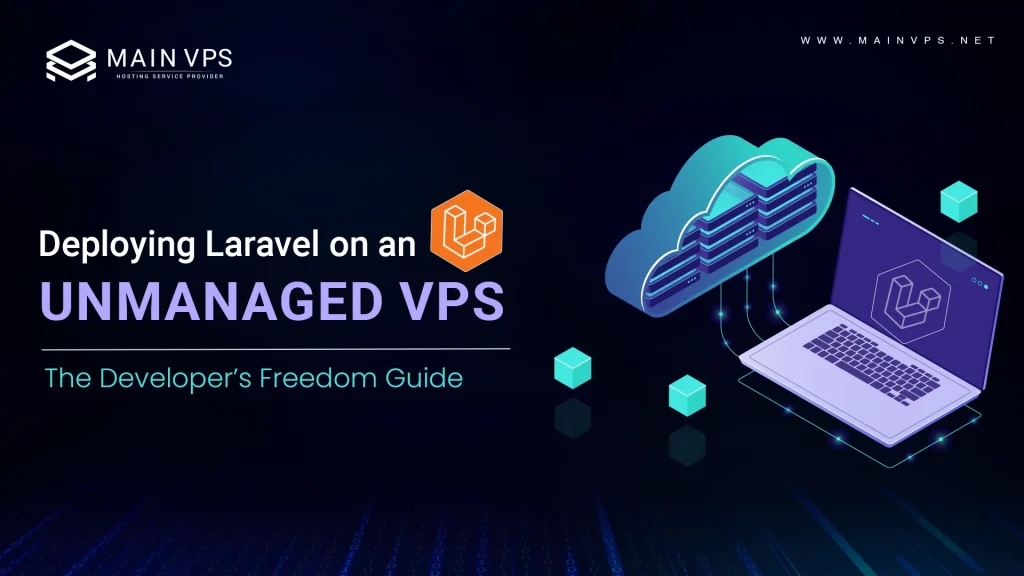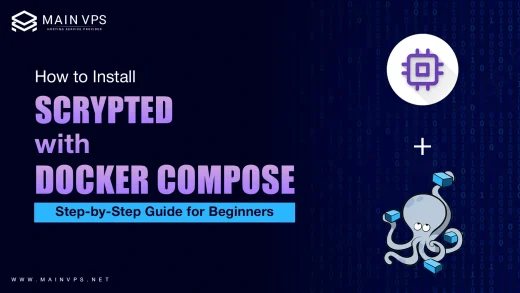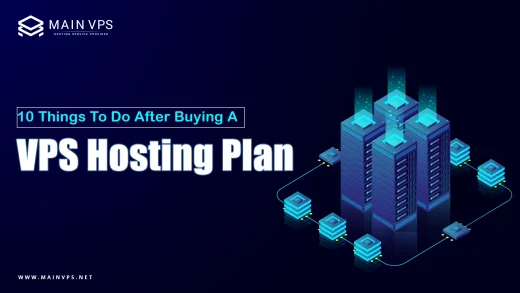
In the world of web applications, Laravel is a favorite. Elegant, powerful, and built for developers who care about clean code. But to unlock its full potential, you need more than a flashy hosting plan—you need freedom. That’s where deploying Laravel on an unmanaged VPS comes in.
This guide is your go-to if you’re a developer who values control, performance, and optimization over convenience. Whether you’re migrating from shared hosting or scaling up your infrastructure, this walkthrough will help you master your Laravel VPS deployment.
Why Use an Unmanaged VPS for Laravel?
Let’s be honest: shared hosting is like living in a noisy apartment. You’re limited, overcrowded, and constrained by someone else’s rules.
With an unmanaged VPS, you get the developer equivalent of owning land:
- Root access to install and tweak anything you want.
- Full-stack customization—from PHP-FPM pools to queue management.
- Serious performance gains from server-level caching, optimized databases, and more.
- Security control—no more hoping your host did the right thing.
Yes, it’s more work. But it’s also your system, your rules, your optimization. That’s why top Laravel developers choose VPS.
What Makes Laravel VPS Deployment So Effective (in 2025)?
What Makes Laravel VPS Deployment So Effective (in 2025)?
In 2025, Laravel VPS deployment isn’t just a developer trend—it’s a practical response to how the web is evolving. Application complexity is increasing, user expectations are higher than ever, and Google’s latest algorithm updates are putting real performance and developer-led experience at the top of the ranking signals.
Here’s why deploying Laravel on a VPS matters more than ever this year:
- Google now rewards technical depth. With the 2025 core update, Google prioritizes content built on real-world experience. A Laravel app running on a finely tuned VPS demonstrates that expertise—especially when backed by optimized performance, security best practices, and a custom stack.
- Speed equals success. Laravel is powerful, but it thrives in optimized environments. VPS hosting lets you fine-tune PHP, database queries, queue workers, and server caching—all of which directly impact load time, Core Web Vitals, and search rankings.
- Shared hosting is out, ownership is in. Developers today want control—not guesswork. Unmanaged VPS gives you that control. You can choose your stack, secure your app your way, and troubleshoot without third-party limitations.
- Laravel’s ecosystem demands it. From Horizon to Octane to Sanctum and broadcasting with Redis, many Laravel features are only fully optimized when deployed on a VPS environment where you control every aspect of configuration.
In short? Laravel VPS deployment in 2025 isn’t optional if you care about speed, control, and ranking well. It’s the modern standard for serious developers who want performance without compromise.
Step-by-Step Laravel Deployment on Unmanaged VPS
Here’s how to go from a fresh VPS to a production-ready Laravel app.
1. VPS Setup and Security Basics
- Start with a fresh Ubuntu 22.04 LTS image.
- Create a new sudo user (
adduser laradev && usermod -aG sudo laradev) - Disable root login and change SSH port.
- Install fail2ban and UFW firewall:
bashsudo ufw allow OpenSSH sudo ufw enable
2. Install LAMP or LEMP Stack
Laravel plays well with both Apache (LAMP) and Nginx (LEMP), but Nginx + PHP-FPM is faster and more modern.
Install essentials:
bash
sudo apt install nginx php8.2-fpm php8.2-mbstring php8.2-xml php8.2-bcmath php8.2-curl php8.2-mysql mysql-server unzip git curl
Enable and configure Nginx server blocks with SSL.
3. Database Configuration
Secure MySQL and create the Laravel database:
bash
sudo mysql_secure_installation
CREATE DATABASE laravel_app;
CREATE USER 'laravel_user'@'localhost' IDENTIFIED BY 'StrongPassword123';
GRANT ALL PRIVILEGES ON laravel_app.* TO 'laravel_user'@'localhost';
4. Clone Your Laravel Project
SSH into your server, then:
bash
git clone https://github.com/your/repo.git /var/www/laravel
cd /var/www/laravel
composer install --optimize-autoloader --no-dev
Set file permissions:
bash
chown -R www-data:www-data /var/www/laravel
chmod -R 775 storage bootstrap/cache
5. Environment Setup
Configure .env:
env
APP_ENV=production
APP_DEBUG=false
APP_URL=https://yourdomain.com
DB_CONNECTION=mysql
DB_DATABASE=laravel_app
DB_USERNAME=laravel_user
DB_PASSWORD=StrongPassword123
Then:
bas
php artisan key:generate
php artisan migrate --force
php artisan config:cache
6. HTTPS and Domain Setup
Point your domain to the VPS IP. Then install SSL:
bash
sudo apt install certbot python3-certbot-nginx
sudo certbot --nginx -d yourdomain.com
Enable auto-renewal:
bash
sudo systemctl enable certbot.timer
7. Queue and Scheduler Setup
If you use queues:
bash
sudo apt install supervisor
Create a config at /etc/supervisor/conf.d/laravel-worker.conf:
ini
[program:laravel-worker]
process_name=%(program_name)s_%(process_num)02d
command=php /var/www/laravel/artisan queue:work --sleep=3 --tries=3
autostart=true
autorestart=true
numprocs=1
user=www-data
redirect_stderr=true
stdout_logfile=/var/log/laravel-worker.log
Enable Laravel scheduler via cron:
bash
* * * * * www-data php /var/www/laravel/artisan schedule:run >> /dev/null 2>&1
Performance Tuning Tips
Want blazing speed? Optimize with:
- OPCache and PHP tuning (
/etc/php/8.2/fpm/php.ini) - Redis for session/cache
- Gzip compression via Nginx
- MySQL tuning via
my.cnf - CDN (Cloudflare) for assets and DDoS protection
Why Developers Love This Approach
You’re not just getting a Laravel site online—you’re engineering a deployment pipeline that’s:
- Fast
- Secure
- Reliable
- Scalable
No panels, no noise, no guesswork. You understand your stack deeply and can scale it efficiently.
Common Mistakes to Avoid
- Skipping security configs (disable root SSH, enable firewall!)
- Not setting proper file permissions
- Forgetting to set environment-specific cache
- Running queue workers without
--daemonin production - Using
APP_DEBUG=trueon live sites
Avoid these and your Laravel app will hum like a well-oiled machine.
Final Thoughts
Deploying Laravel on an unmanaged VPS gives you everything a developer craves: power, speed, and full-stack ownership. It’s not the easiest road, but it’s the most rewarding.
You’re not just launching apps—you’re mastering infrastructure.
✅ Laravel VPS Deployment Checklist
| Task | Status |
|---|---|
| VPS Secured & User Setup | ✅ |
| Nginx + PHP + MySQL Installed | ✅ |
| Laravel Code Deployed & Configured | ✅ |
| SSL & Domain Configured | ✅ |
| Queue Workers & Scheduler Enabled | ✅ |
| Performance Tuned & Monitored | ✅ |
FAQs
1. Can I use Laravel Forge with an unmanaged VPS?
Yes. Forge helps automate Laravel deployments and works great with VPSs—even unmanaged ones. But if you want total control, skip it.
2. What’s the best VPS provider for Laravel apps?
Choose one that offers SSD storage, root access, fast CPUs, and flexible scaling. MainVPS.net (yes, we’re biased) gives you developer-grade performance at a great price.
3. How often should I update my server?
At least once a week. Automate security updates and monitor Laravel logs for app-specific issues.
4. Is Docker better for Laravel deployment?
Docker adds portability and reproducibility. But for solo developers, traditional VPS deployment is simpler and faster to debug.
5. What’s the biggest mistake with Laravel on VPS?
Not securing your server. The moment Laravel goes live, bots start scanning for exploits. Set up firewalls, permissions, and regular backups.





